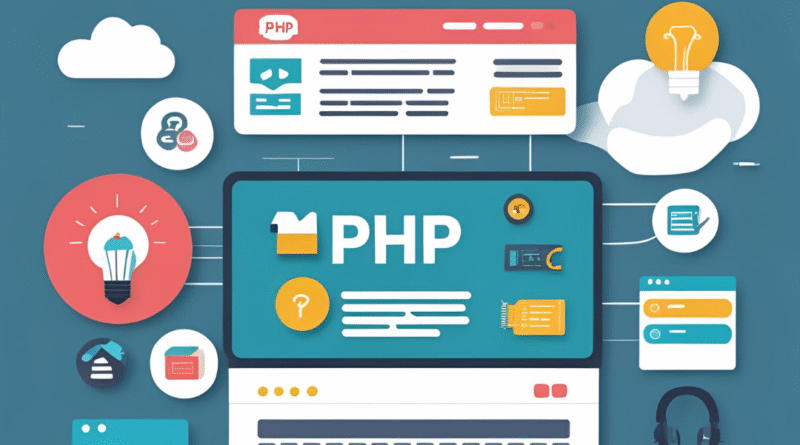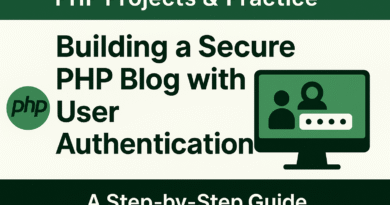PHP Security Best Practices:- Fortifying Your PHP: A Simple Guide to Crushing XSS (Cross-Site Scripting)
In the world of web development, security is paramount. Just like you wouldn’t leave your front door wide open, you shouldn’t leave your website vulnerable to common attacks. One of the most prevalent and dangerous threats is Cross-Site Scripting (XSS). But don’t worry, securing your PHP application against XSS is achievable with some straightforward practices.
What’s XSS Anyway?
Imagine a mischievous hacker injects malicious code (usually JavaScript) into your website. When an unsuspecting user visits a page containing this code, their browser executes it. This can lead to a whole host of problems, from stealing user session cookies (allowing the hacker to impersonate the user) to defacing your website or redirecting users to fake login pages. It’s a serious breach of trust and can severely damage your website’s reputation and user experience.
Your Shield Against XSS: Simple PHP Best Practices
The good news is that preventing XSS in PHP largely boils down to one core principle: never trust user input. Always assume that anything submitted by a user could be malicious. Here’s how to build your defenses:
- Escape Everything You Output (The Golden Rule!): This is your primary weapon against XSS. Before displaying any data that originated from a user (like comments, forum posts, profile information, or even search queries), you must escape it. Escaping converts special characters into their HTML entities, rendering them harmless.
- The PHP Hero:
htmlspecialchars()This function is your best friend. It converts characters like<,>,&,", and'into their HTML safe equivalents.PHP<?php $user_comment = $_POST['comment']; echo htmlspecialchars($user_comment, ENT_QUOTES, 'UTF-8'); ?>Pro Tip: Always useENT_QUOTESwithhtmlspecialchars()to also escape single quotes, which are crucial for preventing XSS in HTML attributes. SpecifyUTF-8for robust character encoding. - When to Use
htmlentities(): Whilehtmlspecialchars()is generally preferred,htmlentities()is more comprehensive, converting all applicable characters to HTML entities. Use it if you need a stricter approach, but be aware it can sometimes lead to overly aggressive escaping. For most XSS prevention,htmlspecialchars()is sufficient.
- The PHP Hero:
- Input Validation (Beyond Escaping): While escaping prevents output from being malicious, input validation ensures that the data itself conforms to your expectations.
- Filter Input: If you’re expecting a number, ensure it’s a number. If it’s an email address, validate its format. PHP’s
filter_var()function is excellent for this.PHP<?php $email = filter_var($_POST['email'], FILTER_VALIDATE_EMAIL); if ($email === false) { // Handle invalid email } ?> - Whitelisting: Instead of trying to blacklist potentially bad characters (which is a losing battle), define what is allowed. For example, if a username can only contain alphanumeric characters, strip out everything else.
- Filter Input: If you’re expecting a number, ensure it’s a number. If it’s an email address, validate its format. PHP’s
- Content Security Policy (CSP): Your Extra Layer of Defense Think of CSP as a bouncer for your website’s resources. It’s an HTTP header that tells the browser which sources of content (scripts, stylesheets, images, etc.) are allowed to be loaded and executed. This can significantly mitigate XSS attacks even if some malicious code slips through your other defenses.
Content-Security-Policy: default-src 'self'; script-src 'self' https://trusted-cdn.com; object-src 'none';This example allows scripts only from your own domain and a trusted CDN, preventing the execution of inline scripts or scripts from unknown sources. Implementing CSP requires careful planning, but it’s a powerful security header for modern web applications. - Avoid
eval()andunserialize()with Untrusted Data: These functions are incredibly powerful but also incredibly dangerous if used with user-provided input.eval()executes arbitrary PHP code, andunserialize()can lead to object injection vulnerabilities. Never use them with data that hasn’t been thoroughly sanitized and validated. - Regular Security Audits and Updates: Stay informed about the latest web security vulnerabilities and ensure your PHP version, frameworks, and libraries are always up-to-date. Security patches often address newly discovered XSS and other threats. Regularly penetration testing your application can also reveal hidden weaknesses.
Conclusion: Secure Your Digital Footprint
Preventing XSS in your PHP applications isn’t rocket science, but it requires diligence and a security-first mindset. By consistently escaping output, validating input, and considering advanced measures like CSP, you can significantly enhance your website’s cybersecurity posture. Remember, a secure website builds user trust, protects sensitive data, and ensures a positive online experience. Prioritize these best practices, and your PHP applications will be far more resilient against the ever-evolving threat landscape.




